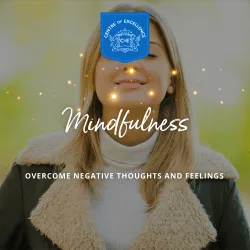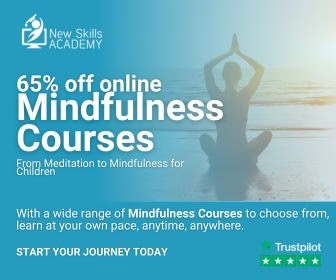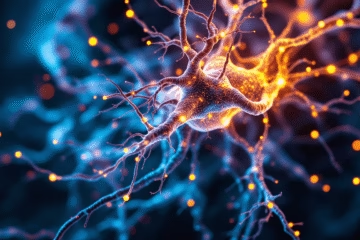In today’s fast-paced world, a life filled with distractions can often draw us away from the present moment. Mindfulness exercises emerge as a powerful solution to reconnect with ourselves and the world around us. In this article, we’ll explore the benefits of mindfulness, introduce practical techniques you can incorporate into your daily life, and discuss scientific evidence that proves its effectiveness.
Quick Insights:
- What is Mindfulness? Mindfulness is the practice of being fully present and aware of the current moment without judgment, rooted in Buddhist meditation but widely used for stress reduction and well-being.
- Benefits of Mindfulness Exercises: Regular mindfulness exercises can reduce stress, improve mental health, increase concentration, and enhance relationships through scientifically supported benefits.
- Practical Mindfulness Exercises: There are simple techniques like mindful breathing, walking, eating, observing nature, body scans, expressing gratitude, engaging in everyday activities, mindful listening, enjoying silence, and maintaining gratitude journals.
- Evidence Supporting Mindfulness: Studies show mindfulness therapy effectively treats anxiety and depression, induces brain changes related to empathy and memory, and helps cope with stress, thereby improving overall quality of life.
- Getting Started with Mindfulness: Begin gradually with one or two exercises, be patient, create a supportive environment, utilize resources, and consider group practices to integrate mindfulness into daily routines.
What is Mindfulness?
Mindfulness is the practice of being present and fully aware of what is happening in the moment, without judgment. This technique has its roots in Buddhist meditation, but it has gained popularity in the West as a tool for reducing stress and promoting well-being. As Jon Kabat-Zinn, one of the main people responsible for the popularization of mindfulness, said,
“Mindfulness is awareness that arises, intentionally, in the present moment, without judgment.”
Benefits of Mindfulness Exercises
Scientific studies show that regular mindfulness exercises can have several benefits, including:
– Stress Reduction: Research shows that practicing mindfulness can lower levels of cortisol, the stress hormone. A study published in the journal Psychosomatic Medicine revealed that participants who practiced mindfulness exercises had a significant reduction in stress levels compared to those who did not.
– Improved Mental Health: Mindfulness has been associated with reducing symptoms of anxiety and depression, promoting greater emotional stability. According to a study published in the Journal of Consulting and Clinical Psychology, mindfulness-based therapy was effective in reducing depressive symptoms in patients.
– Increased Concentration: Practicing mindfulness can improve attention and the ability to focus, helping with daily productivity. A study from Harvard University has shown that the practice of mindfulness can increase the ability to concentrate and working memory.
– Improved Relationships with Others: Mindfulness can also improve empathy and communication. As Thich Nhat Hanh, a renowned Buddhist monk and author, states,
“The practice of mindfulness helps us connect with others more deeply.”
Mindfulness Diploma Courses
Discover the power of mindfulness with our Diploma courses offered by the Centre of Excellence. These carefully structured programs are designed to guide you through the fundamentals of mindfulness, helping you cultivate a balanced, focused, and fulfilling life.
Ten Practical Mindfulness Exercises
Incorporating mindfulness exercises into your routine doesn’t have to be complicated. Here are 10 practical exercises you can start doing today:
1. Mindful Breathing: Take a few minutes to focus on your breathing. Inhale deeply, hold, and exhale slowly. This simple practice can be done anywhere and helps calm the mind.
“The breath is the bridge that connects life to consciousness, that unites the body with the spirit,”
says Thich Nhat Hanh.
Find a quiet place where you can sit or stand comfortably. Close your eyes or keep a soft gaze at a point in front of you. Start paying attention to your breathing. Inhale deeply through your nose, counting to four. Feel the air filling your lungs. Hold your breath for a moment, then exhale slowly through your mouth, counting to six. Feel the air leaving your body and the tension dissipating.
Tip:
– Practice in Moments of Stress: Whenever you feel overwhelmed, take a moment to do this exercise. It can be done anywhere, whether at work, at home, or even in a queue.
– Use a Timer: Start with just 5 minutes and gradually increase the time as you feel more comfortable. You can use a timer so you don’t have to worry about the time.
2. Mindful Walk: During a walk, pay attention to each step. Feel the contact of your feet with the ground and observe the environment around you. This can turn an ordinary activity into a moment of reflection.
“Walking is a form of meditation,”
says Jon Kabat-Zinn.
Choose a quiet place to walk, such as a park or an area with nature. Start walking slowly, paying attention to each step. Feel the contact of your feet with the ground, the movement of your legs, and the sensation of the air on your skin. Notice the sounds around you, the colors of the trees, and the smell of the grass. If your mind starts to wander, gently bring your attention back to the walk.
Tip:
– Walk Aimlessly: Allow yourself to explore new paths and areas. This can make the experience more exciting and engaging.
– Walk with a Friend: Invite someone to walk with you and share their observations about what they see and feel. This can enrich the experience.
3. Mindful Eating: When eating a meal, avoid distractions and focus on the flavors and textures of the food. Not only does this improve the eating experience, but it can also help with digestion.
“When you eat, be fully present,”
recommends chef and author Dan Barber.
When you go to have a meal, sit in a quiet place and put your cell phone and TV aside. Observe the food on your plate: the colors, the aromas, and the textures. Take a small piece and chew it slowly, paying attention to the taste and texture of the food. Try to identify the ingredients and how they combine. Avoid distractions and focus fully on the eating experience.
Tip:
– Try New Foods: Use this practice as an opportunity to try new dishes or ingredients. This can make the meal more interesting.
– Create a Ritual: Turn your meals into a ritual by lighting a candle or putting on soothing music in the background. This can help create a more relaxing environment.
4. Nature Observation: Spend some time outdoors, closely observing nature. Identify sounds, colors, and movements. This practice can increase your connection to your environment.
“Nature is the best teacher of mindfulness,”
says Richard Louv, author of Last Child in the Woods.
Find an outdoor spot, such as a park, garden, or even a window with a view. Sit or stand and take a close look at your surroundings. Try to identify different sounds, such as birds singing or the wind in the trees. Observe the colors and movements of the leaves, flowers, and animals. Allow yourself to be present and enjoy the beauty of nature.
Tip:
– Bring a Notebook: Write down your observations and reflections on what you see. This can help deepen your connection with nature.
– Practice in Different Seasons: Observe how nature changes throughout the seasons. Every time of the year brings new colors and sounds.
5. Body Scan: Lie down comfortably and scan your body, paying attention to each part. This helps to release the accumulated tension.
“The body is a temple, and meditation is the key to your door,”
says author and yoga teacher B.K.S. Iyengar.
Lie down in a comfortable place, preferably in a quiet environment. Close your eyes and start paying attention to your body. Start with the feet, noticing how they feel. Gradually work your way up your body, going through each part (feet, legs, hips, abdomen, chest, arms, neck, and head). If you feel tension in any part, take a deep breath and visualize the tension dissipating with each exhale.
Tip:
– Use Soft Music: Put relaxing music in the background to help create a calmer environment.
– Practice Before Bed: This exercise can be a great way to relax before bed, helping to improve the quality of your sleep.
Step into the world of learning and personal growth with the Centre of Excellence!
6. Thanks: When you wake up or before bed, think of three things you are grateful for. This simple practice can change your perspective and increase happiness.
“Gratitude is the memory of the heart,”
says French philosopher Jean Baptiste Massieu.
Take a moment, preferably in the morning or evening, to reflect on three things you’re grateful for. Try to be specific and describe why you are grateful for these things. It can be something simple, like a smile from a friend or a moment of peace. Write your reflections in a gratitude journal.
Tip:
– Create a Daily Ritual: Make it a daily practice, perhaps when you wake up or before bed. This can help cultivate a positive mindset.
– Share with Others: Talk to friends or family about the things you’re grateful for. This can strengthen your bonds and create a positive environment.
7. Everyday Activities: Turn daily tasks, such as washing the dishes, into moments of mindfulness. Focus on the sensations and movements involved.
“Life is made up of small moments, and the practice of mindfulness helps us appreciate them,”
says psychologist and author, Dr. Rick Hanson.
Choose a daily activity, such as brushing your teeth, showering, or washing the dishes. Concentrate fully on this activity, noticing every movement and sensation. Feel the water, the smell of the soap, or the texture of the dishes. Allow yourself to be present and enjoy the moment.
Tip:
– Choose an Activity You Don’t Like: Turn a task you normally do on autopilot into a moment of mindfulness. This can change your perspective on the task.
– Set a Time: If the activity is long, such as washing the dishes, set a specific time to fully concentrate on it. This can help you stay focused.
8. Mindfulness in Conversations: During a conversation, listen actively and maintain eye contact. This improves communication and strengthens relationships.
“Listening is an art that requires continuous attention,”
says author and speaker Stephen Covey.
During a conversation, maintain eye contact and listen carefully to the person you are talking to. Avoid interrupting and allow the other person to finish their thoughts before responding. Pay attention to emotions and tone of voice, as well as words.
Tip:
– Practice with Friends: Choose a friend or family member to practice this with. This not only improves communication but also strengthens relationships.
– Avoid Distractions: Put your cell phone aside and create an environment conducive to conversation. This helps you stay focused.
9. Quiet Moments: Take time to simply be silent. Allow your thoughts to come and go, without getting attached to them.
“Silence is the source of all creativity,”
said artist and author John Cage.
Find a quiet place and sit comfortably. Close your eyes and allow your thoughts to come and go, without getting attached to them. If your mind wanders, gently bring your attention back to the present moment. Allow yourself to be silent and simply exist.
Tip:
– Start with Little Time: Start with just 5 minutes and gradually increase the time as you feel more comfortable.
– Use a Timer: A timer can help free your mind from worrying about time, allowing you to focus on silence.
10. Gratitude Practice: Keep a gratitude journal and write down your reflections. This helps cultivate a positive mindset.
“Gratitude turns what we have into enough,”
says author and speaker Melody Beattie.
Keep a gratitude journal and write down your reflections daily or weekly. Write down three good things that happened that day and why you are grateful for them. This helps to cultivate a positive mindset and focus on the good things in life.
Tip:
– Be Specific: The more specific you are, the more powerful the exercise will be. Instead of just writing “I’m grateful for my family,” try describing a specific moment you enjoyed.
– Read Your Notes: Take the time to read your gratitude notes. This can help reinforce positivity and gratitude in your life.
Step into the world of learning and personal growth with the Centre of Excellence!
Studies and Evidence of the Benefits of Mindfulness Exercises
The effectiveness of mindfulness exercises is backed up by a number of studies. A meta-study published in the American Journal of Psychiatry concluded that mindfulness-based therapy is effective in treating anxiety disorders and depression. Another study conducted by the University of Massachusetts showed that mindfulness practice can lead to structural changes in the brain by increasing gray matter density in areas related to memory, empathy, and emotional regulation.
In addition, research from Stanford University revealed that the practice of mindfulness can improve the ability to cope with stress, resulting in a better quality of life. This data reinforces the importance of incorporating mindfulness into our daily lives.
Personal Experiences With Mindfulness Exercises
Many people who have incorporated mindfulness into their lives report significant changes. For example, Maria, a 35-year-old teacher, started practicing mindfulness after experiencing high levels of stress at work. She found that by dedicating just 10 minutes a day to mindful breathing, her anxiety decreased and her ability to concentrate increased. “I felt that I was more present in my life and the lives of my students,” Maria shares.
Another example is that of Carl, a 42-year-old executive who struggled with insomnia. After he started practicing mindfulness meditation before bed, he noticed a significant improvement in the quality of his sleep. “Now, I can relax and leave the worries of the day behind,” says Carl. These experiences show how mindfulness can positively impact people’s lives.
New Skills Academy Mindfulness Courses
Unlock your inner calm with New Skills Academy’s mindfulness courses designed for all experience levels. Discover evidence-based techniques to reduce stress, boost focus, and enhance your overall well-being.
Tips for Getting Started With Your Mindfulness Practice
Starting mindfulness exercises can seem challenging, but with a few practical tips, you can make this process easier:
– Start slowly: Don’t feel like you have to do everything at once. Choose one or two exercises and practice them regularly. Consistency is more important than duration.
– Be Patient: The practice of mindfulness is a process. Give yourself time to adapt. As author and mindfulness teacher Jack Kornfield said, “Patience is the key to mindfulness practice.”
– Create a Supportive Environment: Find a quiet space where you can practice without interruptions. This can help to create an atmosphere conducive to meditation and reflection.
– Use Resources: Consider reading books or watching videos about mindfulness. There are many resources available that can enrich your practice.
– Join Groups: If possible, join a meditation group or attend workshops. Sharing experiences with others can be very encouraging and motivating.
Practice Mindfulness In Daily Life
Incorporating mindfulness exercises into your daily routine can have significant benefits for your mental and emotional health. With simple and accessible practices, you can learn to live more consciously and presently. As author and psychology professor Dr. Daniel Siegel said,
“Mindfulness is a way to cultivate connection and compassion, both for ourselves and for others.”
Try the exercises mentioned and observe how they can transform your life. The practice of mindfulness is not just a technique; It is a lifestyle that can lead to greater happiness and fulfillment.
We’d love to hear about your experiences with mindfulness! What exercises have you tried? How have they impacted your life? The exchange of experiences can be a valuable source of inspiration and motivation.
Mindfulness is an ever-evolving field, with new research and techniques emerging regularly. Stay tuned for updates and trends to keep your practice relevant and effective. Keeping up with what’s new can help you discover new ways to incorporate mindfulness into your life.
Body, Mind, And Soul For A Fulfilled Life!






